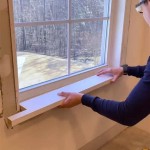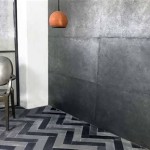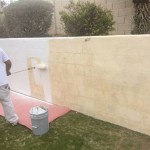How Many Gallons of Paint for a 2000 Sq Ft House Interior?
Determining the correct amount of paint needed for an interior painting project is crucial to avoid unnecessary trips to the store or being left with excessive leftover paint. For a 2000 sq ft house, the calculation involves several factors, including the number of coats desired, the number of rooms, and the surface texture. This article will provide a detailed explanation of how to estimate the required paint quantity, considering these various parameters for accurate planning and execution of an interior painting project.
The standard measure for paint coverage is typically provided on the paint can itself. Most manufacturers claim that one gallon of paint will cover approximately 350-400 square feet with a single coat. However, this is an idealized estimate. In reality, several factors can influence the actual coverage, including the porosity of the wall, the application method, and the color being applied. Using this baseline estimate, a simple calculation provides an initial approximation of paint needs.
For a 2000 sq ft house, calculating the total wall surface area necessitates understanding the typical layout and ceiling height. Assuming an average ceiling height of 8 feet, and a rectangular or square-ish design, one can roughly estimate the wall surface to be significantly more than the floor surface area. To calculate the wall square footage, one must first determine the perimeter of the house. This can be a challenging calculation, but a reasonable estimate can be attained by considering the general dimensions of each room. For example, for a relatively square house, a rough estimate for the perimeter is 200 ft. The total wall surface area is then 200 ft x 8 ft = 1600 sq ft for each floor. This also does not account for windows or doors.
This calculation, for a single floor, would suggest the need for approximately 4-5 gallons of paint for a single coat. However, most interior painting projects require at least two coats, increasing the paint requirement to 8-10 gallons. It's vital to understand that this is a simplification. More complex layouts with multiple rooms, hallways, and architectural features will necessitate more precise calculations. For instance, a two-story house with 2000 square feet of floor area may require even more paint due to the increased wall space associated with stairwells and landings.
Accounting for Multiple Coats of Paint
As previously stated, applying two coats of paint is standard practice for interior painting. The first coat acts as a primer, sealing the surface and providing a uniform base for the second coat, which offers the desired color depth and finish. Certain situations may warrant even three coats. This usually arises when painting over a dark color with a lighter one, or when using lower-quality paints with poor coverage capabilities. In such situations, the amount of paint needed will increase proportionally. For a 2000 sq ft house requiring three coats, the initial estimate of 8-10 gallons for two coats should be increased by roughly 50%, bringing the total to 12-15 gallons. This adjustment is crucial for ensuring complete coverage and a professional finish.
The importance of multiple coats lies in achieving optimal color saturation and durability. A single coat may appear thin and uneven, revealing imperfections in the wall surface. Multiple coats create a richer, more resilient finish that withstands everyday wear and tear. Furthermore, applying multiple coats enhances the paint's ability to resist stains and moisture, contributing to the longevity of the paint job.
Consider the situation where a vibrant red wall is being painted over with a light beige. The dark red pigment can bleed through the lighter beige, even after two coats. In this case, a primer specifically designed to block stains is highly recommended, followed by at least two coats of the beige paint. Without adequate preparation and sufficient coats, the final result may be unsatisfactory, necessitating additional work and expense. Therefore, it is financially and practically wise to apply more paint than less.
The Impact of Wall Texture and Porosity
The texture of the walls significantly impacts the amount of paint needed. Rough or heavily textured walls, such as those with popcorn ceilings or textured plaster, have a larger surface area compared to smooth walls. This increased surface area requires more paint to adequately cover. Porous surfaces, such as unprimed drywall or bare wood, absorb more paint, further increasing the amount required for complete coverage.
When dealing with textured walls, a general rule of thumb is to add an extra 10-20% to the paint estimate. This accounts for the increased surface area and ensures that the texture is fully coated. For porous surfaces, applying a primer is highly recommended. A primer seals the surface, reducing its absorbency and allowing the paint to adhere more effectively. This not only saves paint but also improves the overall finish quality. Some primers are now tintable, meaning they are pre-tinted to better match the color of the top coat. This can reduce the amount of required top coats of paint.
To illustrate, imagine two walls: one smooth and painted, the other with a heavy orange peel texture and unpainted. The smooth wall will require significantly less paint per square foot compared to the textured wall. The textured wall not only has more surface area but also absorbs more paint due to its porous nature. Therefore, accurately assessing the wall texture and porosity is essential for determining the correct amount of paint needed.
The method of application also plays a role in paint usage. Using a roller on a textured wall, for example, will require pushing more paint into the crevices, while a sprayer might result in some overspray and waste. These factors should be considered when making the final estimate.
Calculating for Trim, Doors, and Ceilings
Beyond the walls, trim, doors, and ceilings require separate paint calculations. Trim, including baseboards, door frames, and window casings, often requires a different type of paint, typically a higher-gloss enamel for durability and ease of cleaning. Doors usually require painting on both sides, doubling the surface area to be covered. Ceilings often require a flat paint finish to minimize reflections and hide imperfections.
To estimate the paint needed for trim, measure the total length of the trim and multiply it by its width. This provides the surface area of the trim. Divide this area by the coverage rate of the trim paint (typically 350-400 sq ft per gallon) to determine the number of gallons required. For a 2000 sq ft house, the trim may require approximately 1-2 gallons of trim paint, depending on the amount and complexity of the trim work.
Doors can be treated similarly. Measure the height and width of each door and multiply to get the surface area of one side. Double this figure to account for both sides. Calculate the total surface area of all doors and divide by the paint coverage rate to determine the number of gallons needed. Usually 1-2 gallons is sufficient. It is better to have an extra unopened gallon or quart on hand than to run out short and have to buy one can of paint for a touch up. Be sure to record the paint information as well ie brand, color, shade, number or code, type etc.
Ceilings should be calculated separately using length x width of each room for the ceiling area. For a 2000 sq ft house, the ceiling area will roughly be close to that. Since ceilings don't get touched, or rubbed against, and might only need one coat, that single coat can be used as the single coat that is part of the two coat standard practice. However, most professionals will recommend two coats of paint for the ceiling. A 2000 foot ceiling will take approximately 5 gallons of paint for interior spaces such as bedrooms and living rooms. If the ceiling is especially porous, or there are stains from prior leaks, then another coat may be necessary, adding 2.5 gallons. Special paints for kitchens and bathrooms with moisture protective qualities might also require more paint.
By carefully calculating the surface area of walls, trim, doors, and ceilings, and factoring in the number of coats required, texture, and porosity, a reasonably accurate estimate of the total paint needed for a 2000 sq ft house can be obtained. Consulting with a paint professional at a local paint store can also provide valuable insights and recommendations based on the specific characteristics of the project.

Cost Of Painting A House Interior Comprehensive Guide

Cost To Paint A House Whole Painting Fixr

How Much Does It Cost To Paint A 2000 Sq Ft House

How Much Does It Cost To Paint A 2000 Sq Ft House
How Much Does It Cost To Paint The Interior Of A 2 500 Square Foot House Quora

Cost Of Painting A 2 000 Square Foot House Dallas Paints

Cost To Paint Interior Of House Kind Home Solutions

How Much Does It Cost To Have Your House Painted Pro Painters

How Much Does It Cost To Paint A 2000 Sq Ft House

Understanding Interior Painting Costs A Touch Of Color
Related Posts








